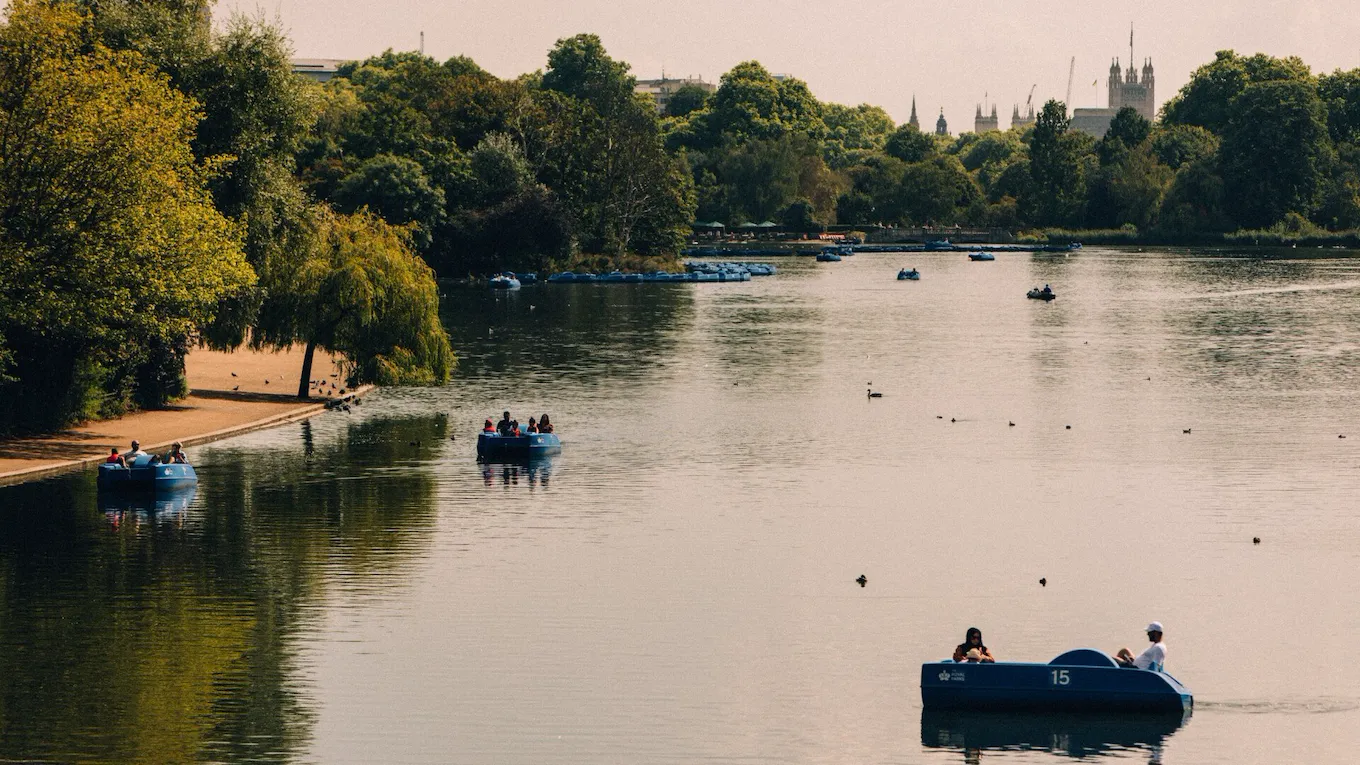The history of Hyde Park – behind the scenes

A great park, a great history
The Royal Park, and its sibling Kensington Gardens, is also home to the elegant Rose Garden, the Italian Garden, the Round Pond, and the Serpentine lake. The park can trace its history back to the Domesday Book, before it became the royal hunting ground for Henry VIII during the 16th century, and as the city has steadily expanded and industrialised, Hyde Park has remained an essential green lung at its heart.
Around 13 million people now visit every year, and as Assistant Park Manager Phil Newcombe explains, “Hyde Park is at the centre of a busy and vibrant city and for Londoners and visitors across the world it provides an oasis of calm”. They come not only for the tranquillity, but for the concerts, waterside cafés, picnics, tennis courts, horse riding, makeshift ball sports, glimpses of the Household Cavalry, or the swimming club. Behind the scenes there is a huge amount of effort needed to keep the park looking so beautifully tidy. “Our contractors work tirelessly, often tidying up early and late in the day to ensure the parks are always spotless,” Newcombe points out.
The Rose Garden, one of the park’s highlights, opened in 1994 and was designed to reflect the idea of horns sounding upon one’s arrival into Hyde Park from Hyde Park Corner. The central circular area enclosed by the yew hedge was designed to be the mouth of a trumpet, while the seasonal flower beds represent musical notes emerging out of the horn. “The scent of the roses in late spring-summer is such a joy,” says Newcombe. “But it’s not just the roses that are delightful. The mixed planting is spectacular as well.” To keep on top of it all the flowerbeds are replanted twice a year with plants and bulbs brought in from the park’s own nursery.
Planting more trees
Then there are the trees, with over 100 different species present, including the famous London plane trees and several magnificent species of oak. A team of arboriculturalists constantly assess the health of the trees and together with the Royal Parks’ team they work on new planting, generally over the winter to give the trees the best chance of survival. In recent years these have included crab apple, hawthorn, cherry and Hungarian oak, to add to the established collection of planes, limes, chestnut, beech and oaks.
Increasing biodiversity
Biodiversity is key to the success of the park, and recently the team has sown some annual meadows and added wildflower plugs (cowslips) into some grass areas. Their current focus is on plants with single flowers, which give insects easier access to the nectar. In the summer, if you are lucky you might see a pair of the Royal Parks’ Shire Horses which are brought in to harrow the long grasses in the meadow as part of the Park’s conservation efforts.
Newcombe and his team take great care to select the right pollinator-friendly varieties to build a bee-friendly environment. Then, alongside their landscape contractor and ecology team they have been creating new wildlife habitats to enhance Hyde Park’s already rich variety of species of flora and fauna. One of the joys of walking through the park is hearing the birdsong, which has been carefully nurtured by the choice of trees, shrubs and herbaceous borders to provide the perfect habitat for songbirds, such as robins, dunnocks and tits.
Education and awareness
Recently, The Royal Parks launched a campaign asking visitors to Help Nature Thrive in London’s Royal Parks. It starts with a plea to ‘keep wildlife wild’ by observing wildlife in its natural environment, rather than getting too up close and personal. Feeding the animals can be problematic, creating harmful effects on both the animals and their habitats, and bringing in unwanted attention from other species.
There is so much that goes into Hyde Park behind the scenes, and the work schedule can be relentless. So, at the end of the day, when in need of a little peace and quiet, Phil Newcombe recommends the gardens by the bowling green. “They offer solitude, and you can see the Albert Memorial gleaming in the distance,” he reflects. “It’s good for the soul.”
Hyde Park, with its rich biodiversity and beautiful landscape, is within easy reach of the 45 Park Lane and The Dorchester. Similarly close by are the tranquil garden squares of Mayfair, each providing little spaces for wildlife amongst the busy urban surrounds.